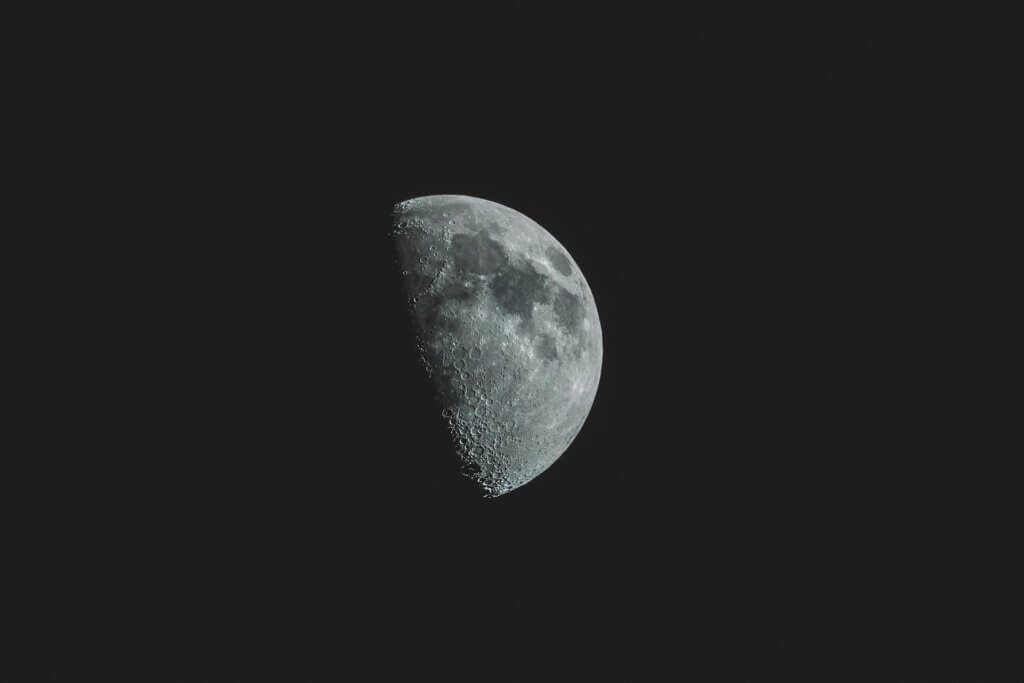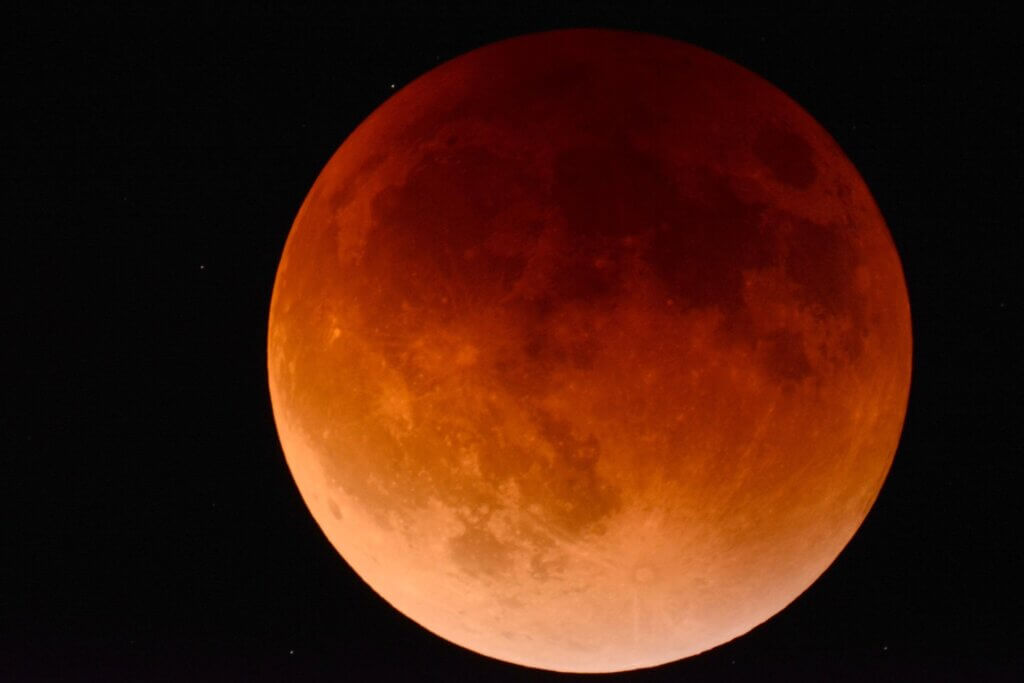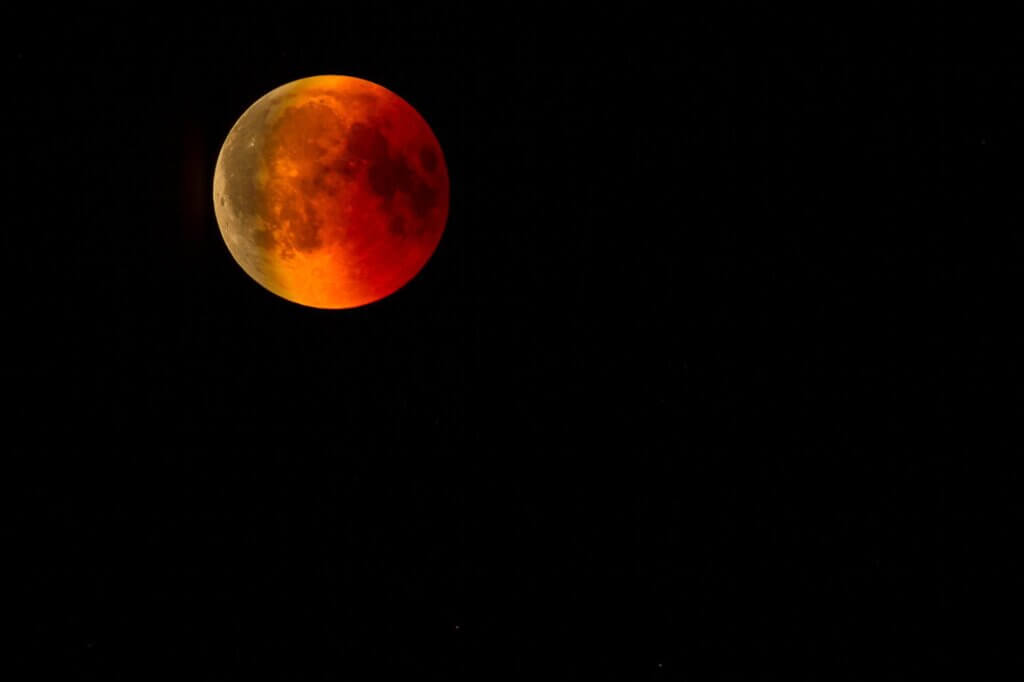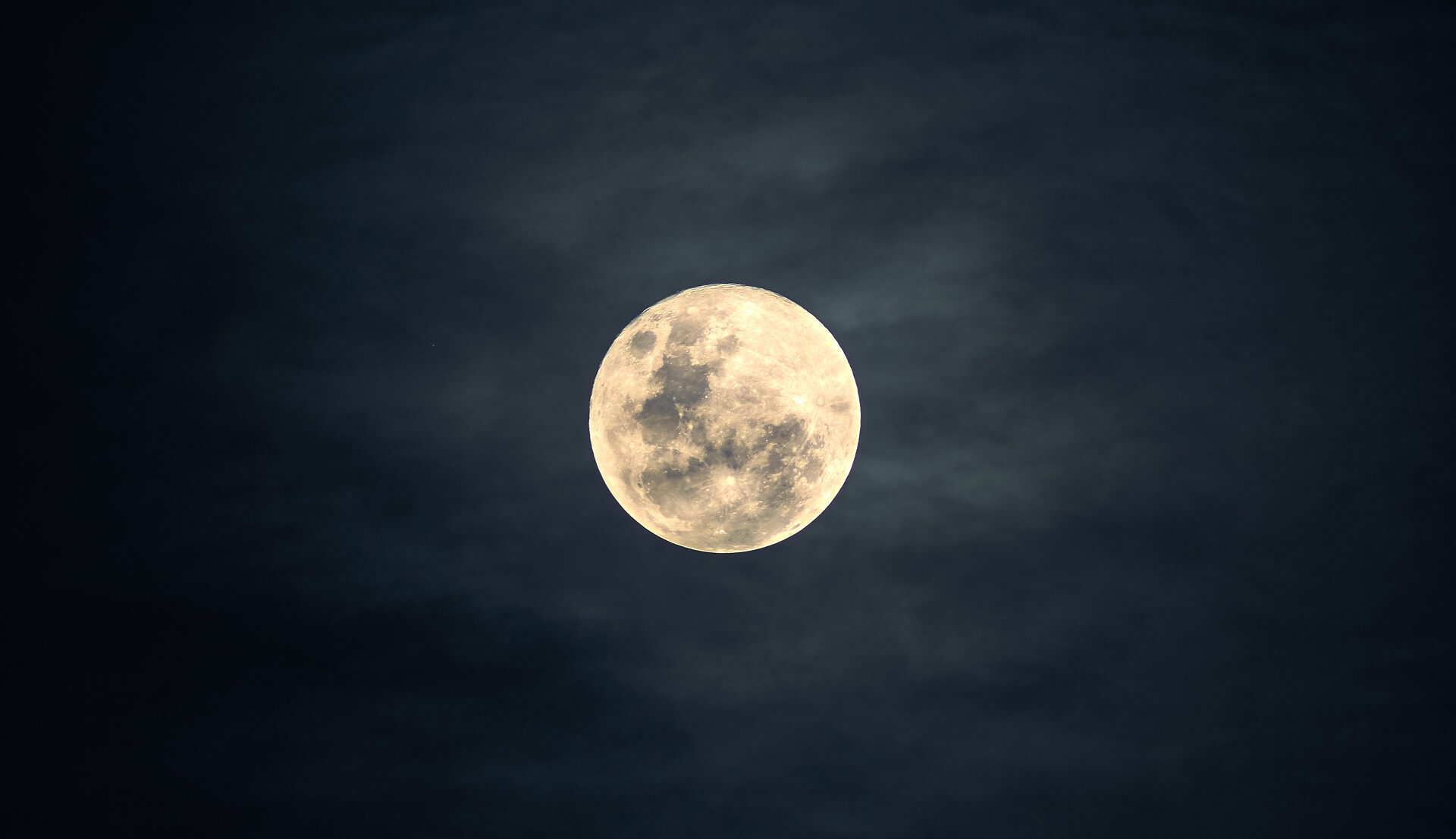Over the ages, a lot of people asked the same question – exactly what color is the moon? It is a very interesting topic to discuss since the color of the moon isn’t constant in human eyes.
The color might seem white when you see the full moon rising and might look vividly different in a case of a total lunar eclipse. So what’s the true colour, then?
We did our research and figured out nearly everything about the moon complexion dilemma. It depends on a lot of factors like reflected sunlight, the earth’s atmosphere, positioning, etc.
In general, the moon has dark grey color with touches of black, white, and a bit of yellow/orange. It is also dependent on its geology, and if you look closely, you might find other shades too!
Why Does the Moon Color Change Frequently?
Before answering that question, let us tell you the obvious – the moon doesn’t have any light coming out of it. Just like our planet earth, it doesn’t have the capability to produce light; it also depends on sunlight. As a matter of fact, it only reflects 3-12% of the sunlight that goes across it.
The brightness of the moon entirely depends on its positioning while orbiting around the earth’s atmosphere. On a full moon, you’ll see it much brighter! Again, in other situations, it appears to be orange, pink, blue, or even red!
This incident is caused by the earth’s atmosphere and its optical phenomena. Truth be told, the moon as a natural satellite does have a color of its own, but that’s surely not red or pink!
Now the reason why we see different colours of the moon is because of its lunar surface. NASA did in-depth research on it, and their missions, notably the Apollo Program, managed to get a proper viewing and its surroundings.
The moon’s surface is made from volcanic rocks, a result of the volcanic eruptions that happened there. These rocks are essential to figuring out the real color of the moon.
But there are other factors too behind the different shades. The color of the moon varies depending on which part of the world you are seeing it from. If the air is heavily polluted, the brightness will be dim, and cleaner air will give a better and clearer view.
Also, the position of the moon and sun is crucial. Another factor is eye sensitivity, as not everyone sees the exact same color on an object. So more or less, these are the reasons why we sometimes observe the moon as orange, pink, or blue.
Why Is the Surface Color of the Moon Grey?
As of now, you should get that we consider shades of grey as the true color of the moon, or at least its surface. The reason behind this is quite simple, though, as the surface is made of minerals like iron, calcium, silicon, magnesium, etc.

Interestingly enough, all of these minerals look greyish when turned to dust. This is why the main surface of the moon looks grey. Now we’ve already said that just like other planets and satellites, the moon only reflects the sunlight.
But that doesn’t mean the Moon is fully grey – now that would be boring, no? This very place is often bombarded by small meteorites from our solar system, so you can find a lot of scars on the surface if you look up close – and their color won’t seem to be grey!
Moreover, the different marks on its surface, caused by its violent formation, also add different shades or patches of other glows.
Is the Color of Moon Light Really White?
White doesn’t fall into the category of the visible spectra, and it’s more of a color that is perceived from any light source that emits all the visible colours at once. As for the moonlight, it is indeed just reflected sunlight, so it is white to your eyes.
Interestingly enough, even though the sunlight looks yellow to the naked eyes, it is, in fact, white. The filtering from the earth’s atmosphere makes it yellowish. It’s not the same with the moonlight, though, as it looks white most of the time.
Another fact is that if you observe the moon from space, it will look like a white, circular dwarf planet!
Does the Moon Produce Red Light?
The moon might not have its own light, but there are scenarios when it might seem like it has turned red. This scenario is known as the blood moon and occurs when it reaches a full eclipse.

Again, it has nothing to do with the actual color of the moon; rather, it’s because, during a total lunar eclipse, the sunlight that the moon reflects gets scattered while passing through our atmosphere, emits red light, and turns the it into a blood moon.
There are a lot of folklore and horror stories about this incident, but in reality, it’s just a game of hues!
When Is the Moon Orange?
Let’s be honest – the moon’s surface is nowhere near orange. However, in a certain scenario, when it’s quite low on the horizon, it can look yellow or orange for a certain period.

The reason behind this is that the reflected sunlight when the moon is positioned on the lower horizon has to go through a bigger part of the atmosphere, so it has to pass through a lot of different obstacles.
From gases to other particles and overall pollution, the light passes through a lot of obstacles, and thus the moon appears to be yellow or orange.
Does the Moon Emit Blue Light?
At this point, a blue moon is basically a myth. Legends say that it’s a wonderful scenario, but it’s a very rare phenomenon, unlike the harvest moon. Interestingly enough, the blue light has absolutely nothing to do with the moon or its movement. Rather, it depends on the events that occur on the earth.
In order to see a blue moon, there needs to be a huge amount of smoke, dust, and other particles in the air high in the sky. Many have asked about a purple moon, but it has been declared unclear and may have resulted from a mix of several effects.
This is not a common scenario, but when volcanic eruptions, forest fires, or wildfires occur, the particles in the sky basically give the moon a blue-ish color at night. It’s possible to see it blue, but it will be a rare occurrence.
How Is the Color of the Moon Dependent on Minerals?
The bright colors that you see on the moon at night aren’t the actual color; as a matter of fact, the dark grey spots you notice in a close-up image give you an idea about the true paints there.
The lunar surface gives you a hint of the subtle shades of color in the moon, mostly because the abundance of minerals defines the colour of the moon’s surface.
Iron-rich areas of the moon look reddish, and titanium-rich areas are sort of blue. These shades are not possible to find if you look up in the night sky.
However, with a closer look and high-level image editing, you can get a glimpse of the actual color of its surface. Moreover, if the moon is very high in the sky, you’ll be able to spot the difference more clearly, although not with the naked eye.
If you want to get a good look at the subtle glows and the color saturation on the new moon, we’d suggest you examine the reflected light coming out of it. To put it in simpler words, the moon should look red, orange, white, or yellow from the earth, grey on the moon, and fully white when you see it from space.
But What’s the Actual Color of the Moon?
Now comes the crucial part, what can be defined as the actual complexion of the moon? Is it faint gray? Is it black? We need answers!
Since 2009, the Lunar Reconnaissance Orbiter Camera (LROC) has been orbiting around the moon. It has taken high-resolution photos for a long time now.
Many of the images gave us some very interesting details about the color of the moon’s surface. Some images showed that parts of the moon have shades of dark red, dark blue, and black. So it might not just be the positioning that creates red light- it might be the surface itself!
In this case, a unit of measurement called an albedo is being used. Albedo measures the reflectivity of any surface where at 0%, it doesn’t reflect anything and is fully black, and at 100%, it reflects all the lights.
The earth’s albedo is 35%, whereas the Moon’s average albedo is 8% only. If we consider this very measurement scale, the Moon is basically a shade of black and grey.
Final Words
As it appears, the color of the moon depends on a lot of factors. Different materials cause different colours, and areas rich in such minerals will have an effect overall
Like other planets, the moon is only bright when it can reflect sunlight to a certain amount – and the particles in the sky do have a lot to do with it.
Moreover, we still don’t know enough about the sun or what’s beneath the moon’s surface; we can only judge its color when it goes through our atmosphere. The lower horizon and upper horizon matter too, and the position of the sun is crucial in determining the glow of the moonlight.
As of now, we can only say that the moon’s color is shades of grey and black, and we should all enjoy the view!

